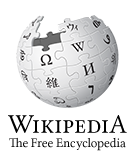The set of imaginary numbers is similar to, but separate from, the real numbers. They can be visualized as occurring along a continuum called the imaginary number line, just as the real numbers constitute the real number line.
Furthermore, just as real numbers can be seen as multiples of an essentially undefined quantity called the unit number (1), so imaginary numbers are multiples of the imaginary unit ().
Imaginary numbers are not real numbers in the mathematical sense, nor in the "real world" sense of representing any physical length, area, volume, etc. However, they are useful in the mathematical modeling of various physical phenomena, such as electromagnetism and signal processing, and are still considered true numbers thus can still be considered "real" in a practical, abstract sense (since all numbers are abstractions to begin with).
However, imaginary numbers cannot be expressed as a quantity of anything.
Representation and arithmetic[]
Any imaginary number may be written in the form
where is a real number and is the imaginary unit, typically defined as the number such that or (see the Imaginary unit article for more details).
The sum of one real and one imaginary number results in a complex number:
In this notation, is called the real part and the imaginary part of the number.
See the Complex number article for more details, including the properties of "complex arithmetic" required to justify the computations shown below.
The product or quotient of any two imaginary numbers (excluding the possibility of division by zero[1]) is a real number:
- , provided
The sum or difference of two imaginary numbers is an imaginary number (possibly zero[1]):
The product or quotient of one real and one imaginary number (again, excluding division by zero) is imaginary:
- , provided
- , provided
Any other arithmetic or algebraic expression containing imaginary numbers can be manipulated as if were a real-valued variable like (or a real constant like π), except that powers of can be simplified. See the Complex number article for details.
History and name[]
Imaginary numbers were used by Gerolamo Cardano in his 1545 book Ars Magna,[2] but were not formally defined until 1572, in a work by Rafael Bombelli.[3] The term "imaginary" was first applied by René Descartes in 1637, although he applied the term to what is today called complex numbers.[3] As with the negative numbers and irrational numbers, a "derogatory" term was chosen for the new numbers, since they seemed to be mere inventions devoid of any reality (the term "real" was then used to distinguish "non-imaginary" complex numbers from the imaginary ones).[4] Imaginary numbers were not widely accepted by mathematicians until the work of Leonhard Euler (1707–1783) and Carl Friedrich Gauss (1777–1855).[3]
References[]
- ↑ 1.0 1.1 Zero may be considered imaginary as well as real. (See Wikipedia:Imaginary number.)
- ↑ Wikipedia:Gerolamo Cardano.
- ↑ 3.0 3.1 3.2 Wikipedia:Irrational number.
- ↑ Whether the term "real number" was in fact developed as a retronym in response to the discovery of imaginary numbers is not clear. (See, e.g., Wikipedia:Talk:Real number.)
















